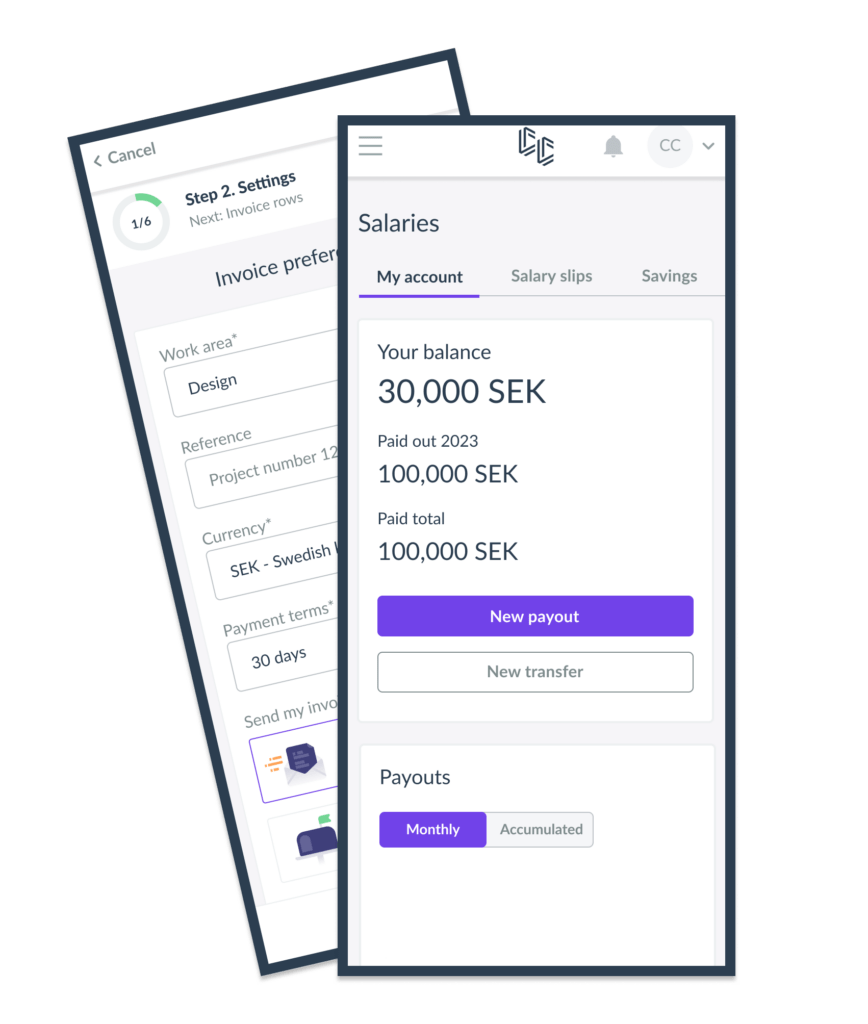What Should You Charge as a Freelancer?
Salary is a central part of working life, whether you are freelancing, working as a permanent employee, or combining various job variations. What is not as obvious is how much you should charge to achieve the monthly salary you desire.

Put a Price on Your Time
As a freelancer, you set your own salary and price. Before you can start invoicing your clients for your services without having a company, you need to determine how much you should charge. Pricing your time can be tricky.
When freelancing, you must consider that what you invoice your client is not what ends up in your account in the end. About half of the amount goes to various taxes and fees that must be paid in Sweden. Therefore, it is important to be aware of how much of the invoiced amount becomes your salary.
Below you will find a link to our salary calculator – a tool we have developed to make it easier for you as a freelancer to determine how much you should charge your clients.
In addition to using our salary calculator, it might be a good idea to find out the average market price for the services you will be performing. This way, you can get an additional indication of what price level you can set.

What Hourly Rate Should You Have?
The question of how much to charge as a freelancer is like asking how long a piece of string is. It simply depends on a lot of external factors. What do you freelance in, how much experience do you have, what type of assignment is it, and who is the client.
What is more concrete, however, is considering the type of income you want and need, and then it becomes easier to adjust the hourly rate and calculate how much you need to work to reach your goals.
To decide how much you want, you can look at how it is in your industry and area. Be careful with how you look and possibly calculate the hourly wage from the monthly salary or vice versa if that is what’s indicated, and consider aspects like pension and vacation when you finally decide.
Hourly Rate or Fixed Price?
Choosing between charging per hour or having a fixed price as a freelancer is an important consideration. Charging per hour provides flexibility and a connection to the work effort, but it can be difficult to estimate the exact time. A fixed price gives clarity and predictability but can be challenging with changes or extra work.
For complex projects, it may be beneficial to combine both models by having a fixed price for the main part of the work and adding an hourly charge for any changes or extra work. Evaluate each project individually and communicate clearly with the client to find the best model for you and your business.

Ready to Get Started?
Are you ready to start your first assignment? Then just create an account in a few minutes and get started.